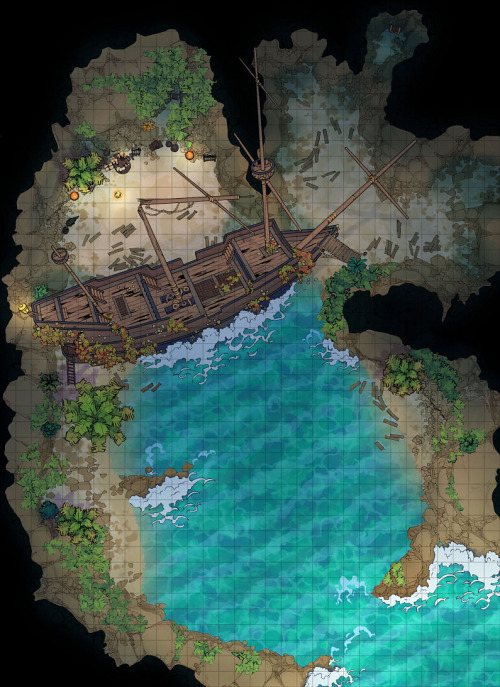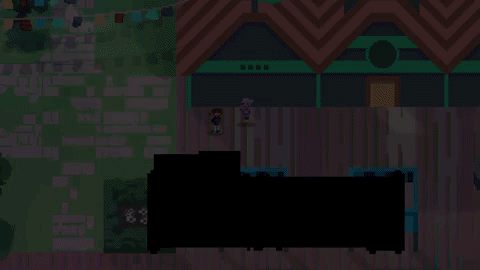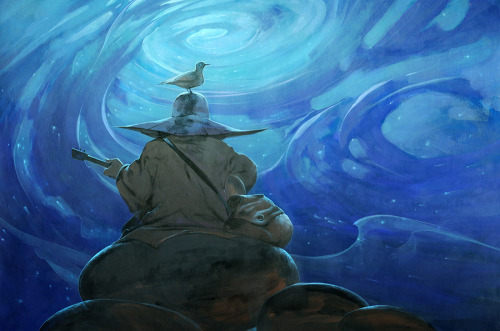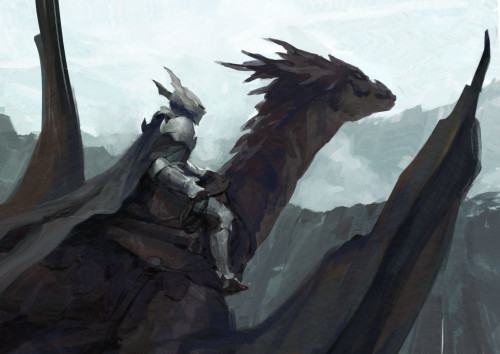You Can Take Your Honor With You To The Grave. I’m Not Dying For Someone Else’s War; I’m Not Dying

You can take your honor with you to the grave. I’m not dying for someone else’s war; I’m not dying for anyone but myself!
So says a Deserter, who takes the military training of a warrior and bends it to means most unsavory. Highly adept at hitting enemies when they’re down, but against an opponent who can give a straight fight, a Deserter will have to be a bit more selfish, setting up advantage with Focused Aim instead. Somewhat of a mix of the Battlemaster and Samurai, mechanically, but the Rogue chassis makes for a very different experience than the raw offensive prowess of a Fighter. Synergizes extremely well with Focused Aim, from Tasha’s, and while potentially doubling your Sneak Attack damage is impressive, it’s actually only slightly ahead of, say, using Booming Blade and keeping your advantage. Naturally, it’s not possible to stack them… at least, not without six levels of Bladesinger, but that means giving up a whole lot of Sneak Attack dice.
More Posts from Bungeonsandbagons and Others
Writing Realistic Characters - part 2
- Journal from their perspective. It can be hard to write compelling, realistic motivation for characters if you don’t understand them yourself. By journalling from their perspective, even if the content of the journal isn’t included in your story, you’ll essentially be thinking as the character. This should help you understand who they are and how they make choices and react to things, like a real person would.
- Answer “character questions”, but be careful when using lists found online. The internet is full of lists of questions for writers to answer when building characters, but not all of them are actually that important or useful. The fact is, it really doesn’t matter what a character’s favourite colour, animal or day of the week is (unless it’s relevant to your story… but it usually isn’t). When looking for question lists online, or making your own, focus on questions that have to do with your character’s personality, such as how they’d react to a situation or which values matter more to them.
- Make character charts! I can’t stress this enough — character charts are incredibly useful tools for writers and I don’t know what I’d do without them. They’re a great way to keep track of important information about your characters in an organized way that’s easy to access when you need to quickly check a detail. I’d also strongly recommend making your own charts, not using templates online (I find it a lot easier to stay organized when I’m using my own organizational system). If you need a place to start, though, I normally create charts with 4 categories: role (protagonist, antagonist, etc.), name, identities (gender, ethnicity, sexual orientation, etc.), and description (just a brief few sentences about them). You can also make personality charts with things like their greatest flaw, greatest strength, story goals, etc.
- Come up with a few detailed memories/anecdotes from their past. Think of them as mini-stories you can drop into your main story to build a more realistic life around the character. These don’t have to be crucial to the plot, and should be brought up in a natural way, such as in conversation with another character or in the main character’s thoughts. For example, your MC’s best friend might compliment her necklace, and she tells them how her sister gave it to her as a birthday present before moving away. You can also use these anecdotes to drop in important information in a non-obvious way. Continuing the example above, the MC could mention that her sister has the same design necklace, but in green. Later, this becomes a clue, when she finds the green necklace outside the villain’s lair.
- Keep a record of their backstory. This one doesn’t really need much explaining… Just keep notes of your character’s backstory as you come up with it so you don’t risk inconsistencies, which tend to break down realism.
- Remember that the reader can’t see what’s in your head. Your characters may be fully developed, realistic people in your head, but that makes it easy to forget that your readers don’t automatically understand them the way you do — they only know what’s on the page. Asking other people to read your work can help you understand how your characters come through to an audience, but if you don’t want to do that, just re-reading it yourself is also helpful. If you do the latter, though, go through an entire chapter at a time, the way a reader would, not small sections.

The Pirate’s Grotto Battle Map (32x44)
You’ve entered the Pirate’s Grotto, a 32x44 sea cave occupied by a wrecked ship, its pirate crew, and their treasures. Make a Stealth roll…
→ The Pirate’s Grotto Battle Map
Keep reading
Hello! If you like games like Hades, Butterfly Soup, Hyper Light Drifter, Night in the Woods, or Children of Morta, we think you might also like our game, Midautumn!

We got roguelite gameplay, a narrative exploring Asian diaspora experiences, and lots of beautifully designed characters!






We're currently working towards our early access release on May 9th 2023, so wishlist now on Steam to ensure you don't miss out! 🌙
What are some ttrpg's on your game wish list? Ones that you'd want to play or plan to play (or maybe don't have time to). also as a side note your love for ttrpg's fills me with a lot of joy and reminds me why they're so special! : )
Inevitable: COWBOY KNIGHTS TRAGEDY this is number one i wanna play this so bad with a crew who will watch a few anti-westerns and arthurian films beforehand and fully commit to the tragedy aspect (big bold decisions if you know it ends in tragedy!) oh my god this specific flavor of game appeals to me a little too specifically
some kind of horror game. VTM, Curse of Strahd, Shadow of the Demon Lord, Call of Cthulhu, whatever lends itself to horror well. the horror genre is one of my favorites and i would so be down to play some good horror!!
MASKS as a PC!
and always more dnd.
uhhh I'm sure there would be other things but I don't know many ttrpgs off the top of my head. quite like ttrpgs. would very much like to play more. especially with a group of artists who will post dodoles and songs that remind them of characters and talk about them throughout the week and do psychological deep dives and theorize about the story and themes and and and

Image source This was the first subclass I ever made and I'm stilllll tinkering with the thing - it's, fittingly, stuck in a time loop of rewrites.
Have a great week!

Deity: The Walker of the Wheel
“ Traveler! Why don’t you pull up a stone and rest your weary self, Come share a tale, join me in a song. Between us there are as many miles to go as there are stars uncounted, but maybe we can number a few of them before we’re through”.
Setup: There are some gods that demand the worship of all, who seek to spread their gospals to the four corners of the earth. Then there are the small gods, the humble guardians who preside over their little corner of reality and ensure those who journey through it are well taken care of.
The Walker of the Wheel is one of the latter, a guardian god of roads, travelers, and the infinite horizon who protects those who venture far from home. Appearing as a broken down tramp, a traveling mapmaker, or an adventurous youth, the Walker eschews a concrete identity or even a name, preferring to intercede in the guise of a fellow wanderer rather than act through miracles or celestial agents.
Holding no temples save for the small roadside shrines erected by fellow travelers, the existence of the Walker is lore held only by those who live their lives on the road, cobbled together out of scraps of road-lore and tales of secondhand encounters.
Astral travelers are also known to draw the attention of the Walker, who holds stewardship over forgotten gateways between the realms.
Adventure Hooks:
Exhausted and woefully lost with darkness closing in, the party hears the plucking of an old guitar drifting across the landscape, leading them to a small campsite and the hermit who presides over it. The old codger offers them hospitality and a drag off his jug of barleywine, in exchange for their tales of adventure and woe. When the party awakes in the morning, they’ll find the Walker gone and themselves a stonesthrow from their destination, having crossed valleys and rivers in the span of a single night.
Those that impress the Walker are likely to be rewarded with good luck charms touched by a bit of his divine grace. Dented compasses that point the way home, guitar picks that conjure visions of the past when used to strum a nostalgic song, well worn walking sticks that allow for tireless travel over harsh terrain. These items all show evidence of having many owners in the past, as well as handetched patterns of stars and constellations.
While generally a god of good spirits, the Walker cannot stand those who prey upon travelers, and woe to any robber or highwayman who draw his attention. The party bears witness to this wrath when bandits attack their inn, hoping to kidnap and ransom a merchant who also happens to be staying there for the night. The Walker appears partway through this standoff, and with a strike of his stick dissolves the bandit’s leader into a pile of road dust.
Titles: Our Old friend, Master Dust, The Starry Hermit, Wornboot Bill, The Roadwarden
Signs: Whirling Stars and Nebulas, music on the edge of exhaustion, dreamlike landscapes.
Symbols: Hobo Marks, Migratory birds, A long road beyond a gateway.
My DnD headcanon is that 5e Dragonborns actually work in a similar way to TES Kahjiits.
Depending on the temperature their egg was kept in before hatching, they can be one of four things:
A standard PHB Dragonborn.
An elf-like humanoid, with minor details like colored scales near their eyes or sharp fangs.
A medium-sized, wingless, dragon.
A tiny lizard.
All of this involves no actual change to the official rules, your Dragonborn just looks weird, that's it.

Tableskills: The Proactive DM Voice
One of the most fundamental lesions I learned over the course of becoming a great DM was that it was my job to push the story forward, not my players. When I was younger I was terrified of taking any agency upon myself for fear of railroading my group, thinking that my job was merely to read out prepared text and design a playground for my players to explore as they saw fit. Needless to say, no matter how much planning i did or how big I made my campaign world it never made my party any more energized, instead bleeding out their attention until they became listless and the group/campaign dissolved.
Once I made the change to DM driven play, things changed almost instantly. My once distracted players became excited collaborators, looking to steer the runaway engine that was my narrative. Where as before they were directionless, having infinite shallow options, they were now focused on the road ahead of them, trying to dodge upcoming hurdles while reacting to the unexpected ones.
This change took some getting used to, but became most evident in how I narrated my games, cutting down on extraneous calls for rolls, chaining together scenes until a big finale at the end of the session, using my infinite power as narrator to push receptive players into interesting situations that progressed both the story and their character arc. Over time I began to think of these changes and a bunch of others as “proactive DM voice”, a skill that I think players and dungeonmaters alike could benefit from learning.
Lets look at an example, lifted from one of the very first modules I ever ran: The party stands at the edge of a tremendously large fissure, and has to lower themselves a hundred or more feet down to a ledge where they’ll be ambushed by direrats. You could run this in a rules literal sense: reading out the prepared text then waiting for the party to come up with a solution, likely dallying as they ask questions. Have them make athletics checks to descend the ropes, risk the possibility of one of them dying before the adventure ever begins. Then you do it two or three more times as they leapfrog down the side of the canyon, wasting what was perhaps half an hour of session time before you even got to any of the fun stuff.
Or you could get proactive about it:
Securing your ropes as best you can, you belay over the side of the fissure, descending down in a measured, careful pace aiming for the most stable looking outcrop of rock, still a hundred or so feet above the canyon’s base. A few minutes and about two thirds of the way through your decent [least athletic PC] looks like they’re struggling, their hands are coated in sweat and they can feel unfamiliar muscles burning in complaint. I need [PC] to make me an athletics check
Rather than waiting for the players and the dice to make a story for me, I took the extra step in my prep time to think of something interesting that might happen while they’re venturing through this section of the map. I specifically designed things so that happenstance wouldn’t kill off one of my heroes, but they might end up damaged and in a perilous situation should the fates not favour them that particular moment.
Likewise, this planning has let me prepare a number of different angles that I could use to prepare the next scene: with an injured player ambushed by multiple rats while their allies dangle a few rounds away or with the party saving their friend and descending together, too much of a threat for the rats to tackle all at once, leading them to stalk the party through future encounters.
This is already getting a bit long, but for those interested in more ways you can adopt a proactive DM voice, I’ll give more examples under the cut
Keep reading
OP: When demonstrating dance moves, it's crucial to execute the actions precisely. (cr 爵士舞柳柳老师)


Adventure: The Star gone Astray
The road has led your party to Etelva, a backwater barony who’s small capital hugs the banks of an icy lake and trade river. Happy to have the town’s walls as shelter against the early winter chill, you find the citizens of Etelva in a state of confusion and disorder: Strange signs have been seen in the sky weeks past, followed by tales of monsters and disappearances in outlaying settlements. Best take tonight to warm yourselves by the hearth, because tomorrow there’s hero’s work to be done.
Adventure Hooks:
Looking around for work, the party are eventually pointed towards a dwarven monster hunter by the name of Red Jess. Well seasoned in tracking and trapping all sorts of beast, Jess will (after some convincing) invite the party along on a scouting expedition to the snowy hillsides. Rumours have been circulating that folk have seen a dragon, but Jess is experienced enough to know that rumours don’t pay for lodging and the next resupply. Better to head out, get the lay of the land, and determine is there’s truth to any of this hearsay. Worst case there’s no quarry to be had and the hunters come back with a few beast pelts to sell for their troubles, best case scenario they can come back with proof of something and get the baroness or the crown itself to lay a bounty on the creature. A Few days travelling on with Jess and the party do indeed spy a dragon swooping low over hinterlands, not marauding as the rumours said, but obviously searching for something. Taking care not to be seen, the party realize that someone is riding the dragon, both mount and rider surveying the landscape, though for what they cannot be sure.
Having lost important cargo to bandits and up to his ears in debt because of it, an over the hill merchant by the name of Ravell has been pushed over the edge by the paranoid air in Etelva and has begun a series of arson attacks focused first on the property of those he owes money to, and now starting on his own. Confused at first for accidents, these fires are spurred on by a demon that’s latched onto Ravell’s shoulder, feeding his latent desire to “Burn it all and walk away” , a demon that will be quite hostile should the party try and cut its fun short.
After some time in town the party are approached by Ryldyr, a diviner and minor soothsayer who seeks the party’s protection as he beleives someone or something is after him. Ryldyr is only so so when it comes to predicting the future, mainly offering his agrarian neighbours insight on upcoming weather events that might affect their crops. His runes never lie though, and speak of some looming danger that will affect him in particular if he doesn’t keep moving. Just as he’s given the party a few cryptic hints about their future in order to get them to beleive him, the door is kicked in, and several of the Baroness’s guards pour in to take the addled scryer into custody.
Keep reading
-
 eyesopod liked this · 1 year ago
eyesopod liked this · 1 year ago -
 crabsarethepinnacleofevolution liked this · 1 year ago
crabsarethepinnacleofevolution liked this · 1 year ago -
 throughthemadness liked this · 1 year ago
throughthemadness liked this · 1 year ago -
 kindlymysterious liked this · 2 years ago
kindlymysterious liked this · 2 years ago -
 martyslittleusedblog liked this · 2 years ago
martyslittleusedblog liked this · 2 years ago -
 ginger-moomin liked this · 2 years ago
ginger-moomin liked this · 2 years ago -
 batpapytonposts-blog liked this · 2 years ago
batpapytonposts-blog liked this · 2 years ago -
 herald0fgojira liked this · 2 years ago
herald0fgojira liked this · 2 years ago -
 bear-l0ver liked this · 2 years ago
bear-l0ver liked this · 2 years ago -
 written-warrior liked this · 2 years ago
written-warrior liked this · 2 years ago -
 regio-montano liked this · 2 years ago
regio-montano liked this · 2 years ago -
 adannyontheinternet reblogged this · 2 years ago
adannyontheinternet reblogged this · 2 years ago -
 unknown-characther liked this · 2 years ago
unknown-characther liked this · 2 years ago -
 rudibood liked this · 2 years ago
rudibood liked this · 2 years ago -
 sethirel reblogged this · 2 years ago
sethirel reblogged this · 2 years ago -
 sethirel liked this · 2 years ago
sethirel liked this · 2 years ago -
 professorshavey liked this · 2 years ago
professorshavey liked this · 2 years ago -
 iamthesassking liked this · 2 years ago
iamthesassking liked this · 2 years ago -
 dapperyapper liked this · 2 years ago
dapperyapper liked this · 2 years ago -
 nosvertu liked this · 2 years ago
nosvertu liked this · 2 years ago -
 hopeful-seal liked this · 2 years ago
hopeful-seal liked this · 2 years ago -
 boreal-idiacanthus liked this · 2 years ago
boreal-idiacanthus liked this · 2 years ago -
 angrygaydragon reblogged this · 2 years ago
angrygaydragon reblogged this · 2 years ago -
 angrygaydragon liked this · 2 years ago
angrygaydragon liked this · 2 years ago -
 awesoma liked this · 2 years ago
awesoma liked this · 2 years ago -
 hamdumster liked this · 2 years ago
hamdumster liked this · 2 years ago -
 niffty24 reblogged this · 2 years ago
niffty24 reblogged this · 2 years ago -
 niffty24 liked this · 2 years ago
niffty24 liked this · 2 years ago -
 winkypopo liked this · 2 years ago
winkypopo liked this · 2 years ago -
 akroveros reblogged this · 2 years ago
akroveros reblogged this · 2 years ago -
 akroveros liked this · 2 years ago
akroveros liked this · 2 years ago -
 glitterycatdreamer liked this · 2 years ago
glitterycatdreamer liked this · 2 years ago -
 dungeoneer-of-the-galaxy reblogged this · 2 years ago
dungeoneer-of-the-galaxy reblogged this · 2 years ago -
 technicolorsnowflake liked this · 2 years ago
technicolorsnowflake liked this · 2 years ago -
 duckaday liked this · 2 years ago
duckaday liked this · 2 years ago -
 dungeonlordinfo reblogged this · 2 years ago
dungeonlordinfo reblogged this · 2 years ago -
 doppel-anger reblogged this · 2 years ago
doppel-anger reblogged this · 2 years ago -
 doppel-anger liked this · 2 years ago
doppel-anger liked this · 2 years ago -
 abeholdertobeauty reblogged this · 2 years ago
abeholdertobeauty reblogged this · 2 years ago -
 bungeonsandbagons reblogged this · 2 years ago
bungeonsandbagons reblogged this · 2 years ago -
 ofamorning liked this · 2 years ago
ofamorning liked this · 2 years ago -
 anightinghent liked this · 2 years ago
anightinghent liked this · 2 years ago -
 tabletopresources reblogged this · 2 years ago
tabletopresources reblogged this · 2 years ago -
 investigoblin liked this · 2 years ago
investigoblin liked this · 2 years ago -
 challak liked this · 2 years ago
challak liked this · 2 years ago -
 realmstriderzshadow liked this · 2 years ago
realmstriderzshadow liked this · 2 years ago

94 posts